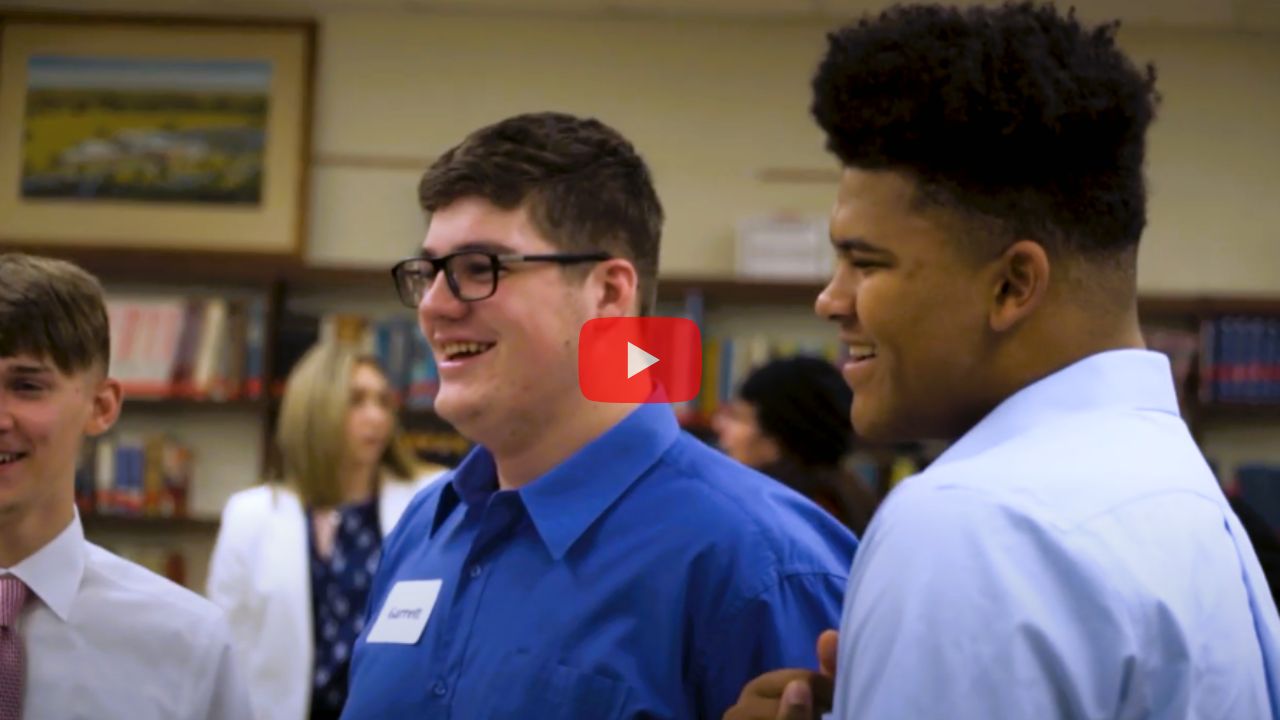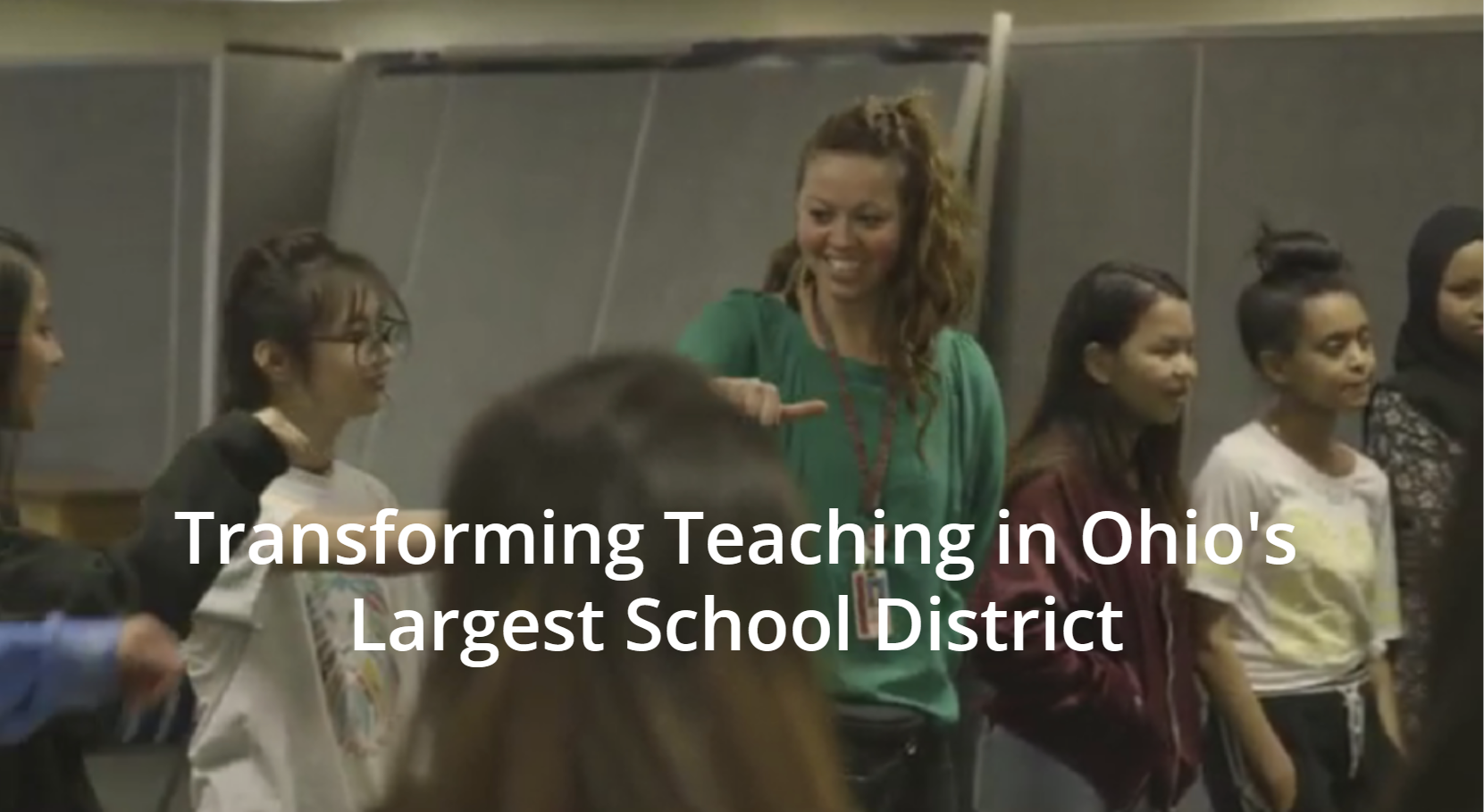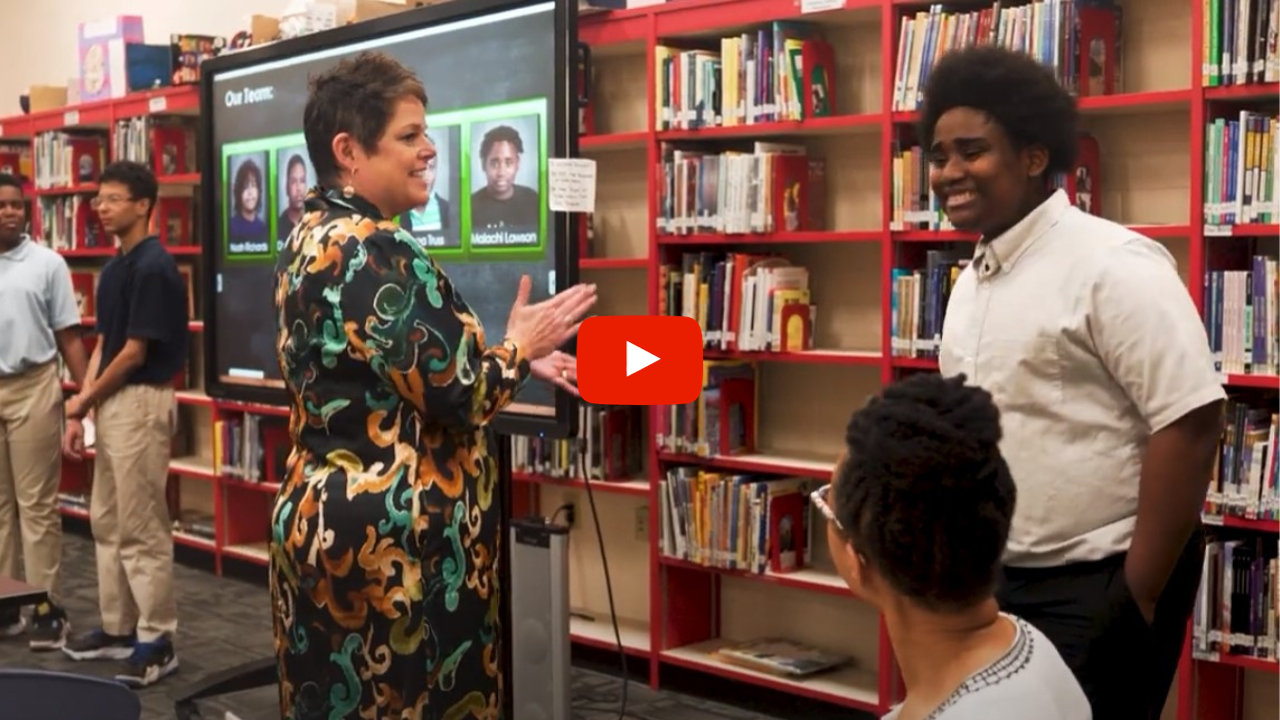In this episode, Doris and Alison examine the growth of the entrepreneurship education movement and how that has changed both the needs of educators seeking training and Doris’s approach to training them.
Alison: So I was curious, now that I’ve been involved in this work for about a year, if we could talk a bit about where you feel entrepreneurship education in the K12 space really is at this point.
Doris: Yeah, it crazy how quickly it is changing and how much it’s changed from year to year, literally from the time I started this five years ago versus even in the past year. When I first started researching this entrepreneurship education, I really did not find much at all anywhere that was an academic program called “Entrepreneurship” that was consistent with how I viewed entrepreneurship. In the K12 space, and even undergrad, any time I saw the label entrepreneurship and I got all excited, what I would find is either what Steve Blank calls “Lemonade Stand” versus “How to Build a Lemonade Stand.” Your grandmother has a great cookie recipe, can you, you know, scale that? Or you know, in undergrad and even graduate programs, a lot of spray-painted MBA classes, where they’re using case studies, or they’re, you know…
Alison: Writing a business plan.
Doris: How to write a business plan or a business plan competition, etc. And there’s still a lot of both of those, frankly, a lot.
Alison: Absolutely.
Doris: But I found early on, the only place I found something that really was exciting to me as consistent with my view, really that’s how I came across Steve Blank to begin with, was because of the class he was teaching at Berkeley, and then later, Stanford and etc.
Alison: And why was that of interest? Why was that consistent?
Doris: Because, so you know this, the way I define entrepreneurship is turning ideas into successful realities, and that’s not limited to business. It’s certainly not limited to small business, and it’s really about problem-solving and how to approach in this crazy, chaotic, data-filled world. The challenges that we face, whether they’re social problems, business problems, consumer…whatever they are. And so it’s a great vehicle, entrepreneurship, for real academic learning. Knowledge, skills, habits of mine, all that stuff. And I’m happy to say that I’m seeing many, many, many more programs now that really define entrepreneurship, view entrepreneurship in that way. Aren’t you? Like even this last workshop, we didn’t have to talk about what entrepreneurship education is and why it is relevant to academics. A year ago at the workshop, I had to talk about it.
Alison: Absolutely. I think it is interesting that, I don’t know if it’s the state of our world or the state of education as well, but the conversation around the need for skills and how critical it is for preparing the next generation to really go out there and understand how to solve problems in a complex world where they have to navigate through a lot of information that…you know, the issue is certainly not that they need to have things memorized anymore. Like you say, now that technology has shifted the game entirely, they have to now understand how to access information, the right kinds of information, and how to synthesize that in order to find solutions. And the encouraging thing, certainly, seeing a lot of these educators coming to these workshops, is that they are so eager to understand how to build these skills. And I understand that maybe not everyone in all the school systems are there yet, but it’s very encouraging that a lot understand the value of skills in addition to actual knowledge that needs to be given, really, to these students.
Doris: Yeah, I think that everybody’s pretty much heard now the call for the development of skills in our students and our young people in our workforce. And the big question’s been, well, how do you develop those? And you know, that’s what we’re trying to do here, and that’s what, fortunately, I’m excited a lot of people are now trying to do and doing in different ways. We talked, you and I, to a woman yesterday who is a scientist and has a very, very impressive resume when it comes o academic credentials in science. And she quit her job a year ago to do a startup full-time. And she said on our call that she has learned more about science in being an entrepreneur than she ever did in school. And I thought that, given her credentials, that anybody would look at and say, “Wow, look where she got her PhD from. Look where she got her Masters from.” Anybody would find that a really remarkable statement. But I get it, you know? I get it.
Alison: Well, I think it speaks to the fact that entrepreneurship is really interdisciplinary. The work of entrepreneurs requires you to pull from multiple disciplines, find those interconnections, look at the world creatively, pull from different sources in order to create solutions. And we can’t imagine that our students in our course or anyone experiencing a problem-solving course like this, could ever go out into the world and not understand how you utilize science, math, statistics, aspects of the humanities, all of these elements that we’ve siloed for years in the education system. Capturing all those together to really create solutions, I mean, it’s really exciting to see.
Doris: Yeah, and we’re working with educators, we’re working with schools, we’re working with some who are creating entrepreneurship programs, but we’re also working with math teachers and science teachers and history teachers. And you know, I talk about mapping out the learning terrain. So you could teach an entrepreneurship class and choose problems for the students to solve that really are not rich with academic learning and challenge.
Alison: True.
Doris: You could. You could pick really simple, but what we’re developing here are ways to create academic learning experiences for students where they are learning, as you said. They’re learning science, and they’re learning communications, including writing. And they’re learning analytical skills and quantitative analysis, qualitative. They’re learning these things because we give them problems that will require them in order to solve them well. They’ll have to learn these things.
Alison: Well, even this past semester is an example. The students were working with an electroluminescent paint company that had a really interesting technology. And when the entrepreneurs came in to explain their business and explain the technology to the students, they pulled me aside after, the students, and said, “You know, this morning we were sitting in physics class, and we were completely lost when they were talking about the ohms and the hertz and this and that.” And they said, “But we just sat through this afternoon with the entrepreneurs and all of a sudden understood why this matters, where it fits in in the world.” And for them to connect and actually have to apply the learning that can come from a textbook or from the Internet, wherever they find the content, but they have to apply that and do something with that. It’s foreign, it’s very new for a lot of these students, where they are initially thinking, “Wow, I know they’re asking me what to do with the information now that I have it.” And it’s a cool space to watch them transition and realize they have the power to take information and use that to create a solution to something.
Doris: It’s interesting. As I listen to you talk, I’m thinking about the fact that as an adult…I’m 57 years old, and I did well in traditional school. But it was when I got out into…I worked for Bell Labs at one point, and when I was in Bell Labs working on something I cared about, I learned some really heavy-duty technical stuff. And I learned it well, because I needed it…
Alison: You were using it.
Doris: …for what I was doing.
Alison: Absolutely.
Doris: And what we were really talking about here is that because of technology, because of the Internet, because of the tools that our students and we have access to, we’re bringing that kind of learning to students earlier in their lives. That’s really what this is. And you know, when you have a student…like I’m thinking of one, a student who came in and had never, ever gotten above a C in science class, couldn’t have cared less. Was into sports, told me day 1, “I’m not into school. You need to know that.” Had really mediocre grades, etc., and worked on Health Spot and in three weeks learned more science and came out of it when…you know, you talked to our college counselor, and she said that she sees these students coming out of this program, who come into the program having not done well in traditional classes, and then they come out of the program, and they start doing well in traditional classes. It’s because it’s relevant. It’s because they’ve learned how to learn.
Alison: That’s right.
Doris: And they understand that it’s relevant.
Alison: And they are really recognizing the value, I believe, that they can contribute to the world. I feel like that wasn’t something I learned until later in life. And certainly in college, I got a glimpse of that, but it wasn’t until I hit the workforce that I recognized my own inherent value that I added to the workplace. And for students at a young age when it’s a really formative time for their identity, they’re trying to figure out who they are, they’re in high school…we all remember high school and how you feel and all the judgments. And for them to be in a place where they’re able to take creative risks and see themselves in a different light where they all the sudden realize, “Oh, I actually am strong at science when I’m using it in this context,” that they find things out about themselves and who they are as a person, what strengths they have, and how they can contribute to a team. It’s pretty powerful to then watch them step into themselves and realize, “Yeah, I actually do have things to contribute to the world, and there’s a lot of things that need to be solved in the world. Let me step into that.” At 16, 17 years old? Are you kidding? That’s exciting.
Doris: Yeah, it is exciting. Two stories that you’re reminding me of. One is we did our first workshop, you know, in the summer of 2014 at Steve’s house, and a woman reached out to me beforehand, who she’s a science teacher at a public middle school in California. And she reached out and wanted to find out what I was gonna be doing at the workshop. And she said, “I’m a science teacher. I’m not teaching entrepreneurship, but it makes me really sad that I can’t get my students excited about science.”
And she did all this homework, and she came, somehow, across what we were doing. And she came to the workshop, and coming out of the workshop, she started teaching her 7th and 8th grade science classes using real problems with all the systems that we showed her for instruction and how to use a problem for a unit, and all this other stuff. And her students don’t all have computers. She doesn’t have the resources at her school, you know, that for example, we do. I spent a lot of time talking to her about how to do this with a different age group, 35 kids in a class.
Alison: Public school setting?
Doris: Public school setting, the whole bit. And I wish I had it in front of me, the things she wrote about how it totally turned her students on to science. And she did this amazing job of giving her students this discovery of their world and how science plays a part, and their own ability to not only understand it, but to actually love exploring it and to be creative in using it. And that’s not about…you can call it entrepreneurship, and it is, in my definition. But it’s really about how do you make the learning relevant and real and powerful and personal?
And then the other thing you reminded me of as you were talking was the conversations we had with several educators in the workshops last week. One in particular, I’ll just use an example, teaching physics. Has a physics class, teaches physics, has content he has to cover in the course of the year, and was struggling with, “Okay, how can I use this in my physics class?” And what I asked him was, “Well, how’s that physics class going?” And he rolled his eyes, and he said, “Well you know, I get these sophomores, and some of them are into it, but a lot of them are kind of bored and disconnected. And I said, “So would you be willing to give up two or three weeks of content real estate at the beginning of the class to have the students work on a real problem that involves physics so that in the first two or three weeks of the course these 14, 15-year-olds realize the relevance of physics to their world? Would that be worth it?” And he said, “Absolutely, because then the rest of the year as I’m teaching them physics, they’ll have it connected to something.” So we’re talking about any discipline, every discipline being connected to the world in ways that are not discrete.
Alison: And it’s exciting work. I’m encouraged that entrepreneurship is now being seen in this way in the education space. I am hopeful that will continue in the K12 space, and as well then, as more K12 moves into this work, that the colleges will also continue to get deeper in their offering. Because we do have a big challenge ahead of us as educators in this world. We have to prepare this next generation to go out there and make some change happen.
Doris: Yeah, and it’s exciting that there are so many educators in schools working on this stuff now. You asked what’s changed. It’s five years ago, I didn’t see a lot of folks out there to talk to, and now there are tons and tons of them.
Alison: Finding some other people that are crazy enough like we are to…
Doris: Yeah, crazy like we are, absolutely, absolutely.







